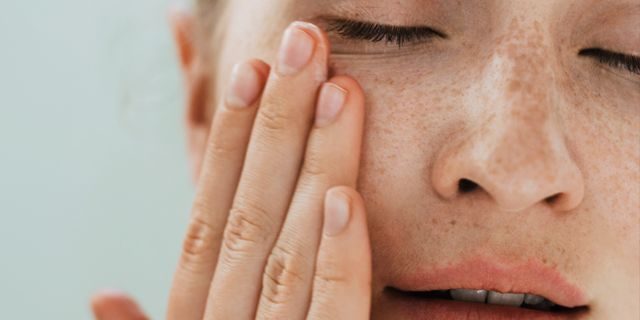A to Z Diseases
Homeopathy Treatment For Skin Problems:
Skin or integument is the outermost protective covering of our body and in fact it is the largest organ of our body. It not only acts as a mechanical barrier protecting us from various microbes lurking in the atmosphere, harmful radiations emitting from the sun and dangerous chemicals, it also helps our body to maintain its temperature, retain moisture, store fat in form of subcutaneous adipose tissue and synthesize vitamin D. Skin is also one of the five sense organ and conveys sensations of touch, pressure, pain etc. to brain. In addition skin also acts as an excretory organ removing few harmful toxins from our body. Our external appearance, the way world sees us also depends on our skin. As we can see skin plays a very important role in our life. All of us want a healthy glowing skin and get disturbed by even a small blemish on it but our skin is relentlessly bombarded with external and internal agents causing distress to it, leading to many skin disorders which not only causes physical discomfort but also emotionally. Some of the common skin disorders are: 

Acne or pimples a most common type of skin condition affecting mostly teenagers though it may occur at any age. It is caused due to over stimulation of oil producing sebaceous gland due to male hormone androgen present in both men and women. They occur mostly on face but other locations like back, neck and shoulders may also be affected. The most common form of acne is acne vulgaris which usually occur in teenage and acne rosacea which occurs in middle aged woman. Though acne as such are quite harmless it causes emotional stress to the vulnerable teenager and may also leave behind blemishes, white heads, black heads or ugly scars.
Dermatitis or Eczema: An inflammatory condition of skin in which areas of skin become red, inflamed and itchy. The affected area may have small fluid filled blister type eruptions or may have dry, flaky eruptions. There are many different forms of eczema and may affect at any age.
- Atopic eczema- Commonly affects children below two. The tendency to develop this condition is usually inherited.
- Contact Dermatitis-caused due to sensitiveness to certain substances when in contact, like the nickel strap of wrist watch, or rubber gloves.
- Seborrheic dermatitis – Commonly known as cradle capin infants and dandruff it can affect people of any age. It is characterized by flakes resembling dandruff in the scalp and on examination red, itchy rash may be seen. Though scalp is the most common area of affection, back, chest, face, ears and in infants diaper area may also be affected.
- Varicose eczema- which commonly occurs in old age due to stagnation of blood as the blood vessels lose their elasticity. Due to stasis of blood, the skin becomes dark, itchy and inflammation which ultimately lead to ulcer formation if not treated.
Lichen Planus: a chronic auto immune skin disorder characterized by raised polygon shaped reddish-purple patches especially in back, ankles and wrists with itching. It may affect even mouth, genital areas and other mucous membranes.
Psoriasis: One of the common skin conditions in which the life cycle of skin cells speeds up leading to formation of scales and red patches with itchiness. Sometimes it may affect nails also leading to pitted or ridged nails, skin may become dry and cracked, and may also affect joints leading to psoriatic arthritis. The cause is unknown and is generally attributed to auto immunity. Most cases of psoriasis have acute exacerbation followed by period of remission. It can occur at any age and as the skin look unhealthy causes social embarrassment to the sufferer. There are many types of psoriasis. The common being:
- Plaque Psoriasis- most common form, the skin has dry, raised lesions which appear reddish in colour called plaques covered with silvery scales
- Guttate Psoriasis- mostly seen in young adults and children characterized by small, red water drop type of lesions usually covered with fine scales and often triggered by a bacterial infection.
- Inverse Psoriasis-which affects mainly the skin folds like arm pits, under breasts, groin area or genitals. The skin has smooth, red patches aggravated because of sweat and friction and most often is triggered by fungal infections.
- Pustular Psoriasis- as name is suggesting, patches are wide spread marked with formation of pus filled blisters and are very painful accompanied with fever, chills and intense itching.
- Erythrodermic Psoriasis– relatively rarer, skin shows a red, peeling rash with burning and itching.
- Nail psoriasis- primarily affecting nails causing them to become deformed and discolored. Sometimes the nail may also separate from nail bed or the nail may simply crumble
- Psoriatic arthritis- in which in addition to skin lesions joints swell and become painful and still. If left untreated it may also lead to joint deformities.
Hyperpigmentation: – in which areas of skin become darker than the surrounding area due to excess production and deposition of melanin pigment. The most common areas affected are face, arms and hands. Liver spots, melisma, freckles, age spots are common examples.
Hypopigmentation- in which areas of skin lose their melanin deposit leading to pale or white patches on skin. The cause can be many including injury, burns, infections, improper skin resurfacing treatments like chemical peeling besides other chronic skin conditions like vitiligo (leukoderma), albinism, pityriasis, and tinea versicolor.
Urticaria: or skin rash usually an allergic condition triggered by food, perfumes and other allergens marked by temporary red, slightly raised wheal (papules) with severe pruritis (itching).
Warts: skin growth caused by papillomavirus. They are usually small, rough and hard some pedunculated and some flat and can occur anywhere in our body. They are usually painless except for those on soles (plantar warts) or on fingers due to friction
As we can notice there are many disorders that affect the skin. It is being relentlessly bombarded with external and internal agents. Most often ointments, creams, lotions or other cosmetic agents are used to palliate a skin condition which only offers a temporary relief or suppression leading to more dangerous complications.
Homeopathic Approach:
Homeopathy is a system which believes in treating the individual as such and not the disease. Disease is the manifestation of internal disorder. What we see outside is the result of disturbances in our internal body physically or emotionally. In fact skin is such an organ, any disorder in the body emotionally or physiologically is reflected by your skin, like a woman suffering from PCOS may have dark patches on the back of the neck and a butterfly rash on face may indicate lupus. In fact more than 60% of skin ailments have got underlying emotional disturbances or stress as the cause and what appears as a simple skin disease has deep lying roots to it. Homeopathy does not believe in suppressing the external manifestation of the skin condition whether it is rash or lesions rather it goes to the root the disease, the emotional, hormonal, genetic or metabolic cause for the disease. Each person is individualized by assessing his emotional behaviour, reason for the disease, symptoms and only after this evaluation a Constitutional remedy is given which not only controls and cure the skin ailment but also the root cause for it instead of suppressing it by administering ointments or lotions. It’s simple medication works on the dynamic plane and helps the body to overcome the disorder without any side effects.








